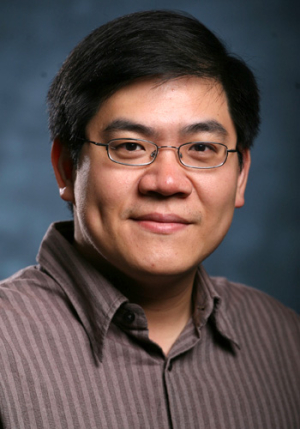Researchers with the University of Houston Cullen College of Engineering have developed a new neural probe that will give scientists new capabilities when studying small clusters of brain cells.
The device, dubbed the optitrode, was featured in a paper published in a recent issue of Optics Letters. The article was written by Cullen College assistant professor of electrical and computer engineering and senior author Wei-Chuan Shih; first author S.T. Lin, a graduate student in that department; Jack Wolfe, also a professor of electrical and computer engineering with the Cullen College; and Jon Dani, a neuroscientist at Baylor College of Medicine.
When neuroscientists want to study how neurons react to optical stimulation, they generally rely on two separate probes, explained Shih. One of these probes stimulates the cells by delivering light to a specific area of the brain. The other consists of four thin twisted wires that are clipped along the same plane. This probe, called a tetrode, ideally will record the reactions of nearby neurons stimulated by the light probe at the single neuron level.
Using two probes, though, creates uncertainty. “Once you insert the probes into the brain, you don’t know exactly where they are in relation to one another,” said Shih. This makes it difficult to know if a tetrode is picking up information from the same neurons stimulated by the light delivery probe.
To address this problem, the researchers have combined light delivery and the tetrode into a single device.
At the core of this probe is the classic tetrode surrounded by a rubber-like material. This, in turn, is surrounded by the light delivery portion of the new probe, which consists of fused silica that acts as an optical waveguide, i.e. a pathway for light. The entire device is then enclosed in the rubber-like material that protects the probe from the tissue it encounters. Current Optitrode prototype measures 100 microns in diameter and two inch in length, allowing it to reach the deepest regions of the brain, such as the hippocampus, which plays a major role in memory.
By putting the tetrode and the light delivery in one probe, said Shih, researchers can always know exactly where each is and even have the light shine directly on the area the tetrode is monitoring. As a result, they should be able to gather data with greater speed and precision.
Not only does this device address one of the practical challenges of brain research, it should also be easy for neuroscientists to create in their own lab, Shih noted. Currently, most brain researchers fabricate their own tetrodes. Integrating the light delivery device is a relatively simple upgrade that could be accomplished with minimal investment.
“This doesn’t need any kind of high-tech equipment. It’s got a clever design and is very simple to make—not much more difficult than making a tetrode,” he said. “It would be a nice addition to the toolkit that neuroscientists use in their labs.”
